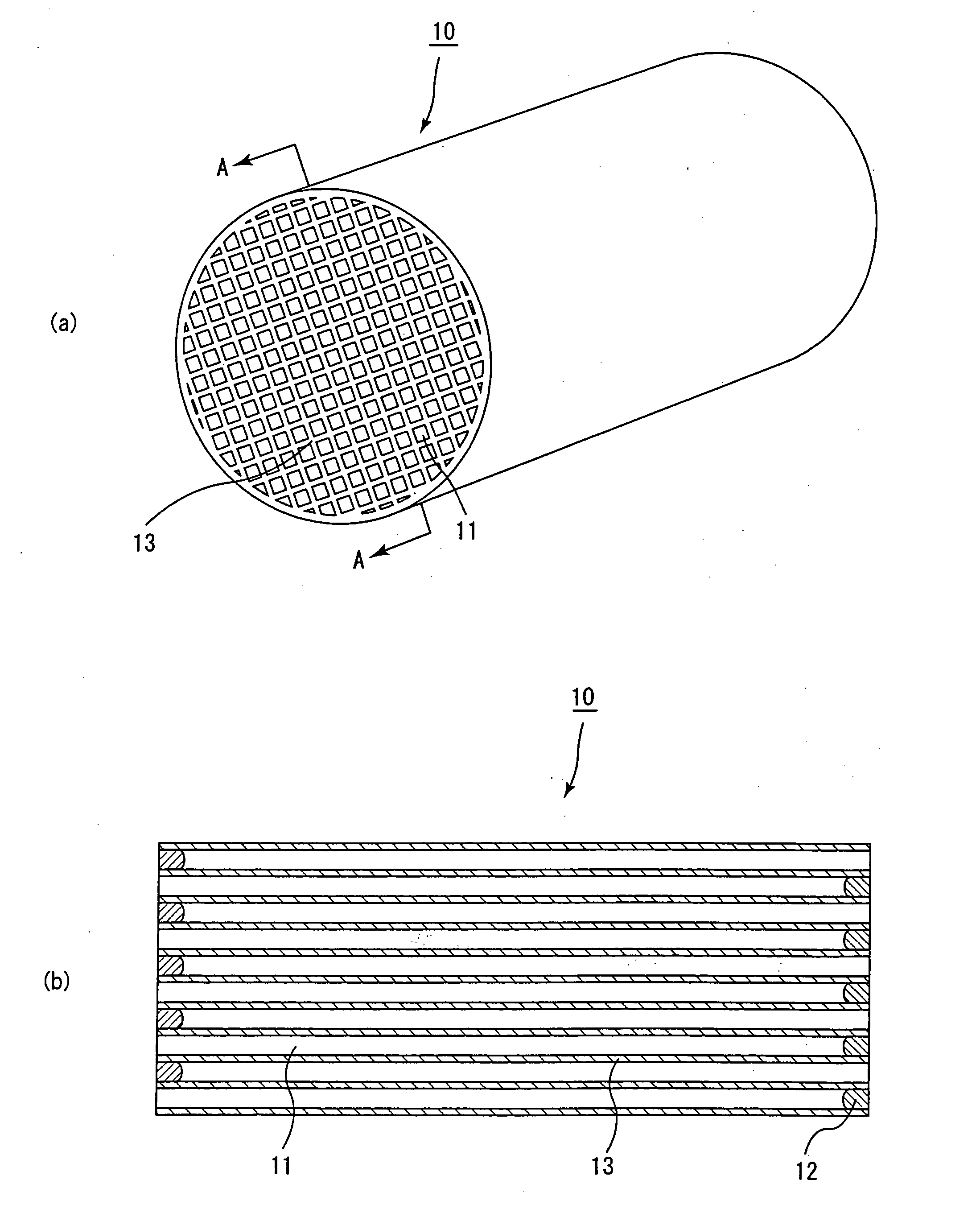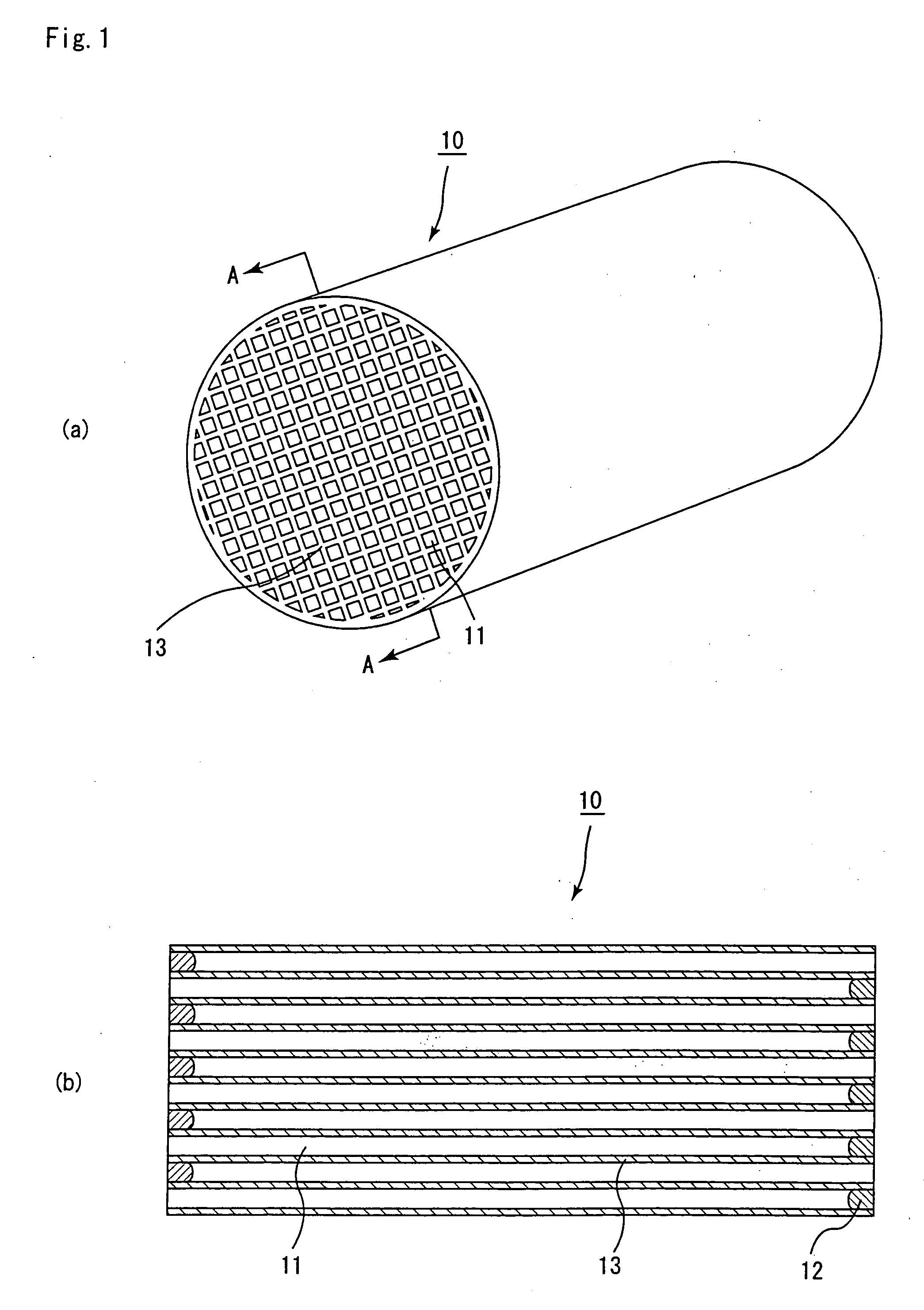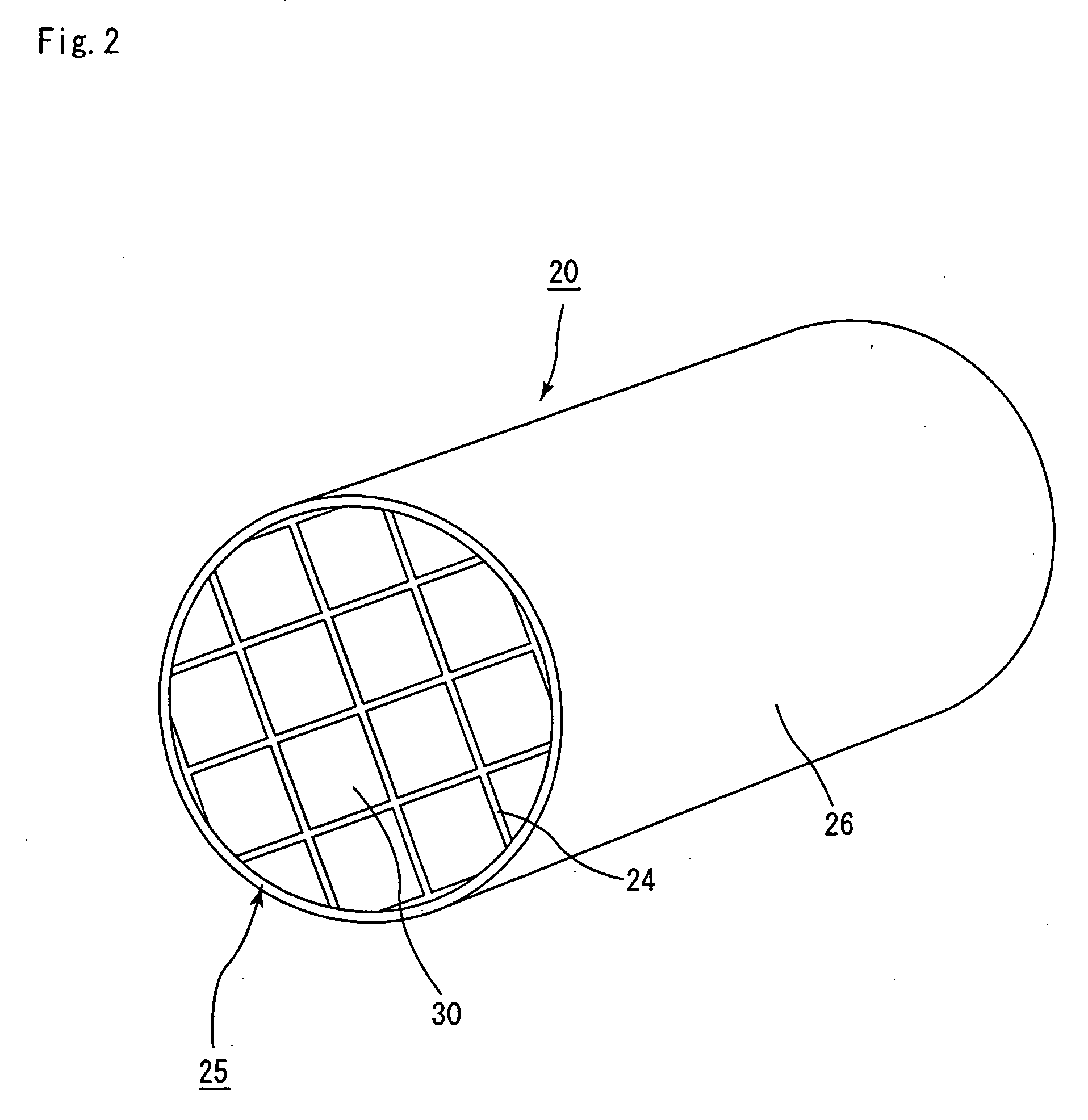Honeycomb filter for clarifying exhaust gases
- Summary
- Abstract
- Description
- Claims
- Application Information
AI Technical Summary
Benefits of technology
Problems solved by technology
Method used
Image
Examples
example 1
[0179] (1) Powder of α-type silicon carbide having an average particle size of 10 μm (60% by weight) and powder of β-type silicon carbide having an average particle size of 0.5 μm (40% by weight) were wet-mixed, and to 100 parts by weight of the resulting mixture were added and kneaded, 5 parts by weight of an organic binder (methyl cellulose) and 10 parts by weight of water to prepare a material paste.
[0180] Next, the above-mentioned material paste was loaded into an extrusion-molding machine, and extruded at an extruding rate of 10 cm / min so that a ceramic formed body having almost the same shape as the porous ceramic member 30 shown in FIG. 3 was formed, and the ceramic formed body was dried by using a microwave dryer to prepare a ceramic dried body.
[0181] Next, powder of α-type silicon carbide having an average particle size of 10 μm (60% by weight) and powder of β-type silicon carbide having an average particle size of 0.5 μm (40% by weight) were wet-mixed, and to 100 parts b...
example 2
[0190] The same processes as those of Example 1 were carried out except that a filler paste, which had been prepared by wet-mixing powder of α-type silicon carbide having an average particle size of 10 μm (60% by weight) and powder of β-type silicon carbide having an average particle size of 0. 5 μm (40% by weight), and adding, to 100 parts by weight of the resulting mixture, 2 parts by weight of UNILOOP, 8 parts by weight of OX-20, 1.1 parts by weight of PLYSURF, 4 parts by weight of Binder D and 0.2 parts by weight of acrylic particles so as to be evenly mixed, was used to manufacture a honeycomb filter.
[0191] In the honeycomb filter according to Example 2, thus manufactured, the columnar body except for the plug had an average pore diameter of 10 μm with a porosity of 20%, and the plug had a porosity of 5%; thus, the porosity of the plug was 0.25 times as much as the porosity of the columnar body.
example 3
[0192] The same processes as those of Example 1 were carried out except that a filler paste, which had been prepared by wet-mixing powder of α-type silicon carbide having an average particle size of 10 μm (60% by weight) and powder of β-type silicon carbide having an average particle size of 0.5 μm (40% by weight), and adding, to 100 parts by weight of the resulting mixture, 4 parts by weight of UNILOOP, 11 parts by weight of OX-20, 2 parts by weight of PLYSURF, 5 parts by weight of Binder D and 10 parts by weight of acrylic particles so as to be evenly mixed, was used to manufacture a honeycomb filter.
[0193] In the honeycomb filter according to Example 3, thus manufactured, the columnar body except for the plug had an average pore diameter of 10 μm with a porosity of 20%, and the plug had a porosity of 30%; thus, the porosity of the plug was 1.5 times as much as the porosity of the columnar body.
PUM
| Property | Measurement | Unit |
|---|---|---|
| Fraction | aaaaa | aaaaa |
| Fraction | aaaaa | aaaaa |
| Density | aaaaa | aaaaa |
Abstract
Description
Claims
Application Information
 Login to View More
Login to View More - R&D
- Intellectual Property
- Life Sciences
- Materials
- Tech Scout
- Unparalleled Data Quality
- Higher Quality Content
- 60% Fewer Hallucinations
Browse by: Latest US Patents, China's latest patents, Technical Efficacy Thesaurus, Application Domain, Technology Topic, Popular Technical Reports.
© 2025 PatSnap. All rights reserved.Legal|Privacy policy|Modern Slavery Act Transparency Statement|Sitemap|About US| Contact US: help@patsnap.com



